Your Knee
The knee joint is a complex joint, The main weight-bearing knee joint is formed by the femur (thigh bone) and the tibia (shin bone). Knee movements are varied to straightening & bending. The knee also has the patella bone (knee cap) which articulates with a groove in the lower end of the femur and makes Patello-Femoral compartment of the knee joint.
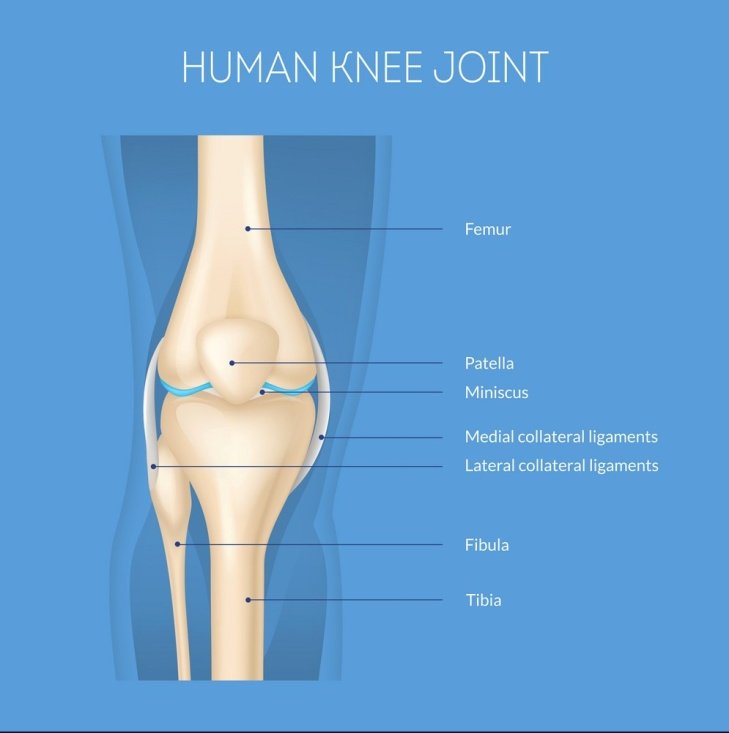
The smooth articular cartilage& lubrication aids in movements. Menisci Cushionand protect the knee. These all permit motions of standing, sitting, jumping, running, and taking stairs.
Knee Arthritis
Cartilage wears down progressively & bone ends rub against each other causing the grinding, accompanied by pain and swelling. With further progression of arthritis, there is further damage to the bones which may cause swelling, tenderness, and stiffness. In severe cases, the knee is deformed with a reduction in movements & difficult walking and severe pain.
Arthritis is usually a degenerative process but there can be few other causes of damage to the cartilage apart from that. For example
- Any injury to the joint
- Infection
- Inflammatory disease.
- Congenital or developmental disorders,
Osteoarthritis: This is also referred to as “wear and tear” arthritis; refers to damage of cartilage because of the degenerative process related to advancing age. Usually, it represents in old age but in a few individuals, it can flare up in early age. Familial progression or genetics also plays a vital role in its incidence. Its etiology is unknown is entirely random where it affects individuals on a variable range of severity.
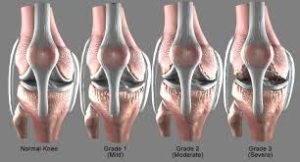
Rheumatoid Arthritis: It is a systemic disease, which affects multiple joints in the body. The synovial membrane, which lines the entire joint cavity becomes inflamed, irritated, and hypertrophied. The resulting healing response damages the cartilage, leading to pain and stiffness. Rheumatoid arthritis starts in much younger patients.
Early diagnosis and use of specific drugs for rheumatoid arthritis keep the disease under control and have markedly helped patients to fight this disease.
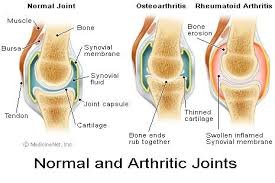
Treatment
Non-Surgical Treatment
Usually, the non-surgical modes are advised initially depending upon the severity of the disease. The main focus is on –
- Physical therapy (exercises) to strengthen muscles.
- Weight loss
- Modifying your activities
- Using assistive devices, such as a cane
- Anti-inflammatory medicines
Physical therapy and exercise can help keep your joints flexible, strengthens the muscles around the joints, reduces pain, and keeps your bone and cartilage tissue strong and healthy. If you start an exercise regimen, take a balanced approach, and include aerobic activities such as walking, swimming, and cycling in addition to stretching/flexibility exercises and strengthening exercises.
Losing weight can have a surprising effect on reducing arthritic pain. With each step, you exert 4-7 times your body weight on your knee joints. So when you lose even a small amount of weight, your symptoms improve dramatically and you may be able to perform more activities and potentially put off surgery for six months or longer.
Guided yoga or pilates can also help reduce pain and improve mobility.
The use of a cane, usually in the hand opposite the affected knee, can reduce the stress across the knee joint. Anti-inflammatory medicines, such as ibuprofen and naproxen, can reduce the inflammation around the knee joint that is caused by arthritis and provide significant pain relief.
If all non-operative treatments have been attempted and fail to reduce pain, then surgical options are considered to provide pain relief.
Depending upon the age and severity of the disease various procedures are carefully selected and advised.
Your doctor may advise you to wear some kind of supportive braces or bandages to artificially support your knee joint.
Sometimes the doctor can advise you to apply an injection inside your knee joint which should be applied with proper selection by an expert orthopaedician or rheumatologist or certified specialist only and that too in a clean bacteria-free environment with strict sterile precautions. There are two kinds of injections usually used to put inside the knee. one is for the reduction of inflammation and the other one is for the lubrication of the joint.
Surgical Treatments:
When despite taking all the medicines and measures, pain worsens and markedly hampers the quality of life and daily routine of the individual then your specialist doctor advises to opt for the surgical options. Few of such options are
- Knee Arthroscopy
- High tibial osteotomy
- Total knee replacement
- Unicompartmental knee replacement
This is the Telescopic surgery of the knee joint which is performed through small punctured holes in the knee joint without any blood loss. This is restricted to the younger individuals and in the moderate severity of the disease. It is a well-established procedure that can provide considerable relief in selected patients and postpone their major surgeries for a few years.
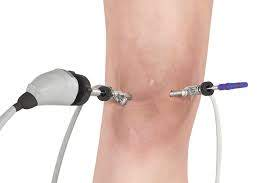
Surgery is done where arthritis is limited to a particular (inner) compartment of the knee which has led to the loss of alignment of the knee joint.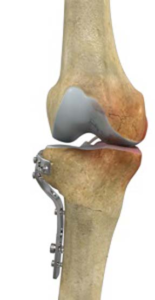
This is also considered in relatively younger patients of around 45-55 yrs of age. Properly planned surgery can give considerable relief to such patients for many years.
Learn more in HTO patient guidelines.
Total knee replacement (TKR) is performed in patients with severe loss of knee cartilage due to injury or inflammation, wear and tear due to various types of arthritis or other aging-related changes in the knee. The entire knee is damaged which results in to severe pain and restriction of activities.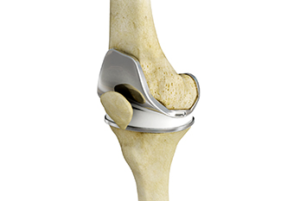
In TKR, the worn cartilage is surgically removed and replaced with a combination of metal and plastic implants.
Learn more about preparing for a total knee replacement in our TKR Patient Guide.
Revision TKR
Total knee replacement implants have a normal life span of 10-20 years. With time, the artificial components also wear out and will need to be replaced in a “revision” TKR procedure. Implants may also need a replacement for infection, pain, or other factors as determined by your doctor.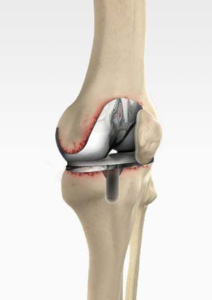
Unicompartmental Knee Replacement
In some cases, wear and tear of the knee or arthritis are confined to a single compartment (or condyle) of the knee. If your doctor determines it appropriate for your individual case, then only the damaged compartment of the knee may be replaced and the healthy compartment of the knee is left alone. This is referred to as a unicompartmental knee replacement and is only applicable to a small number of patients.
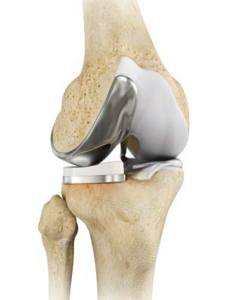
Because a unicompartmental knee replacement is done through a smaller incision, the surgery is quicker, the hospital stay is shorter, and patients can rehabilitate and return to normal activities faster.
